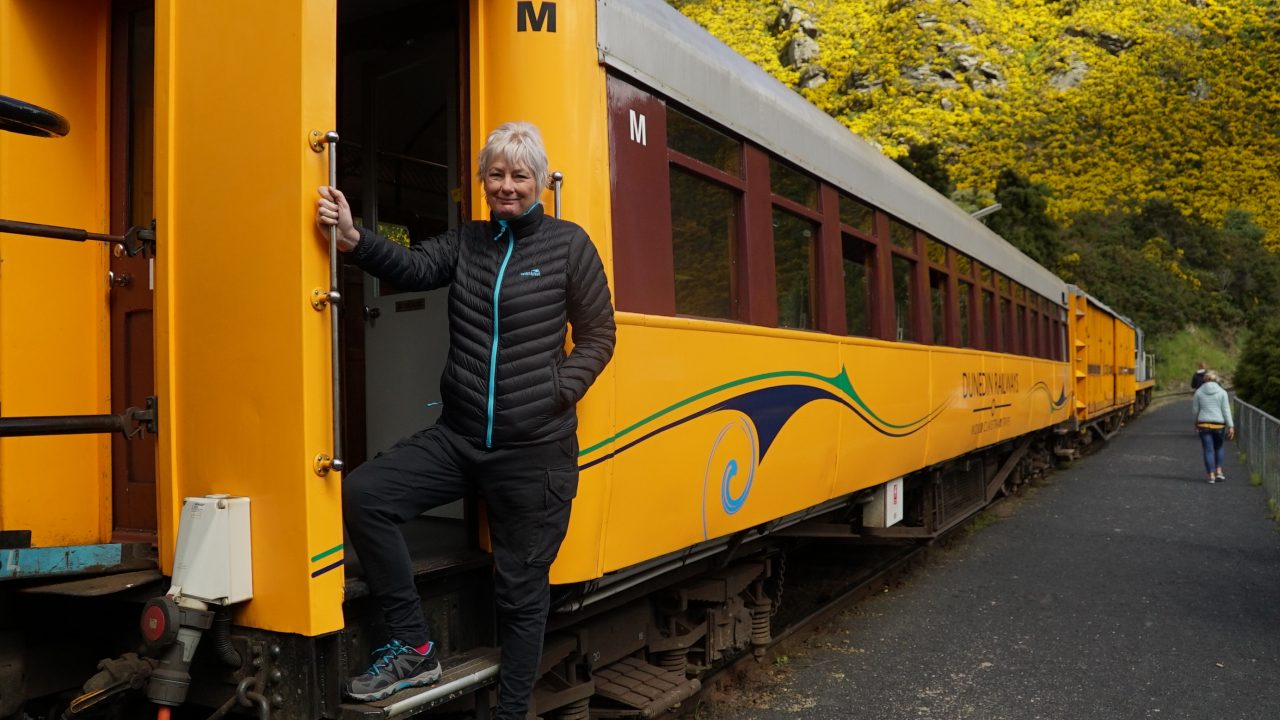We open the curtains and we are still in a lovely empty carpark.
Still it has meant we were able to be just down the road from the town.
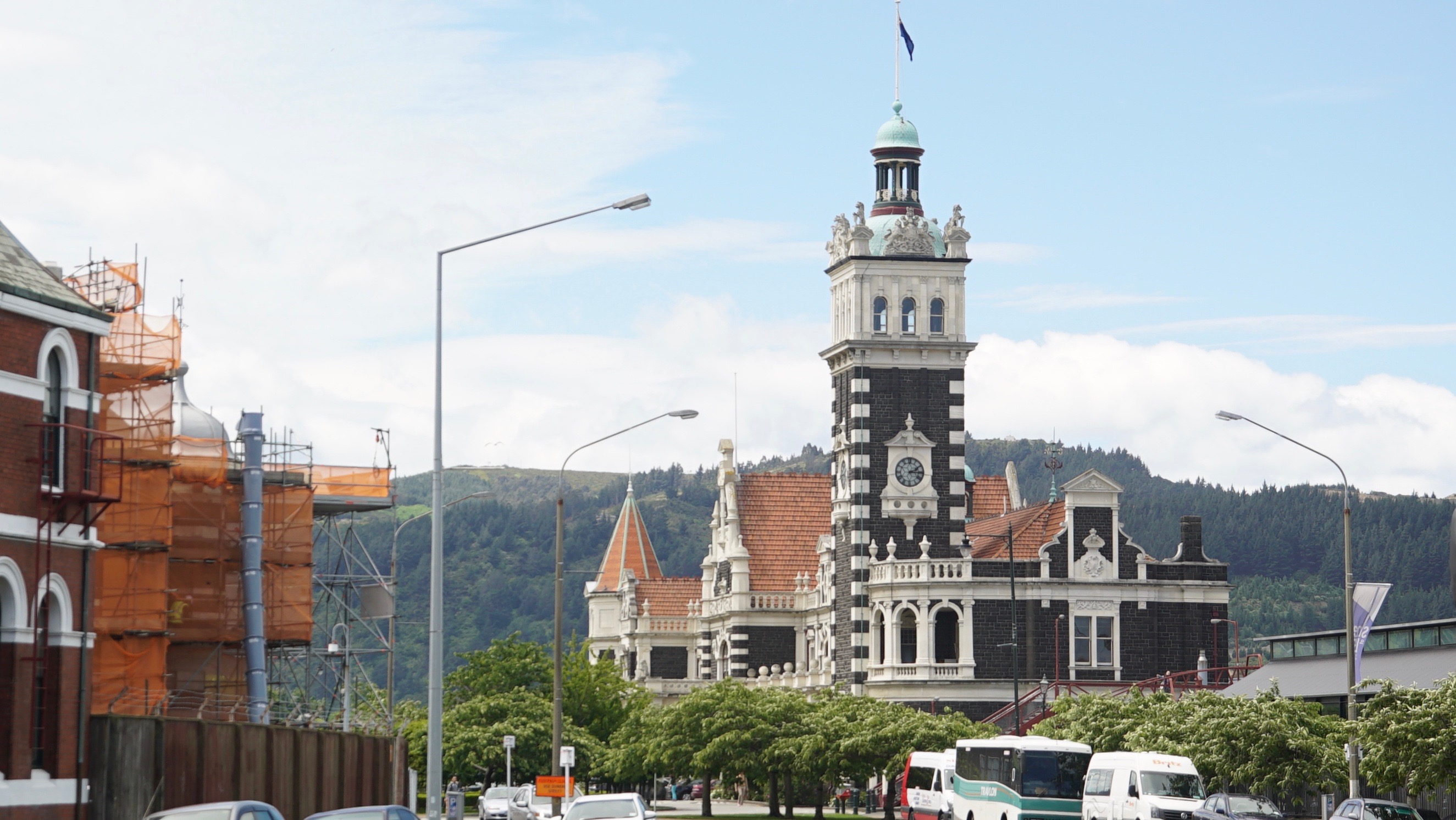
We get up and head to the railway station to get the Dunedin Gorge Railway to Pukerangi.
This victorian railway station is a landmark in it’s own right.
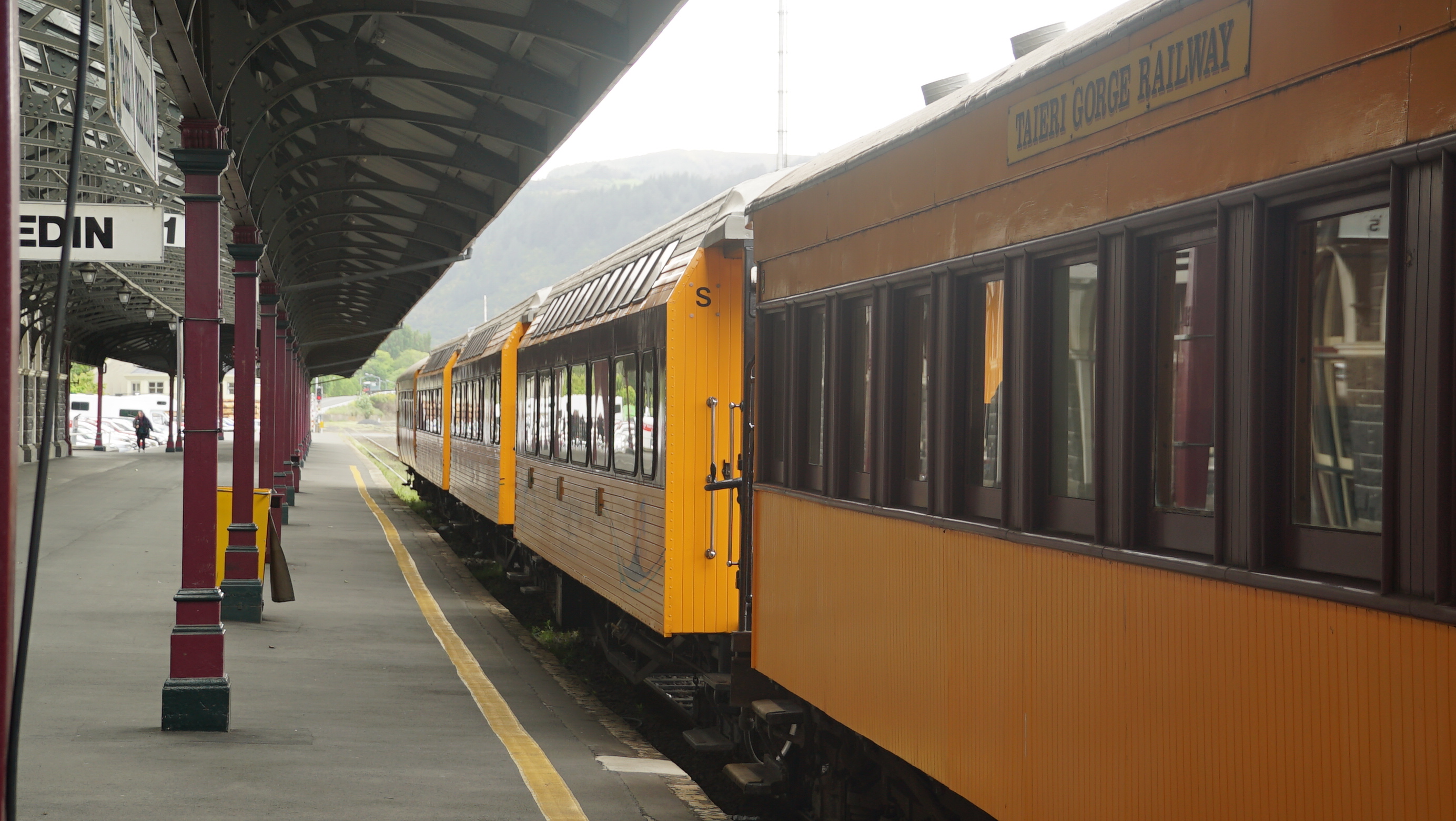
This is about 80 kms but takes an hour and a half wending its way through the gorge until finally emerging in Pukerangi. Then the enguine is disengaged, moves from the front to the back and pulls us back down the gorge in reverse.
The trip is in old carriages who’s design dates from 1907 but which were built in the twenties and have been refurbished ever since.
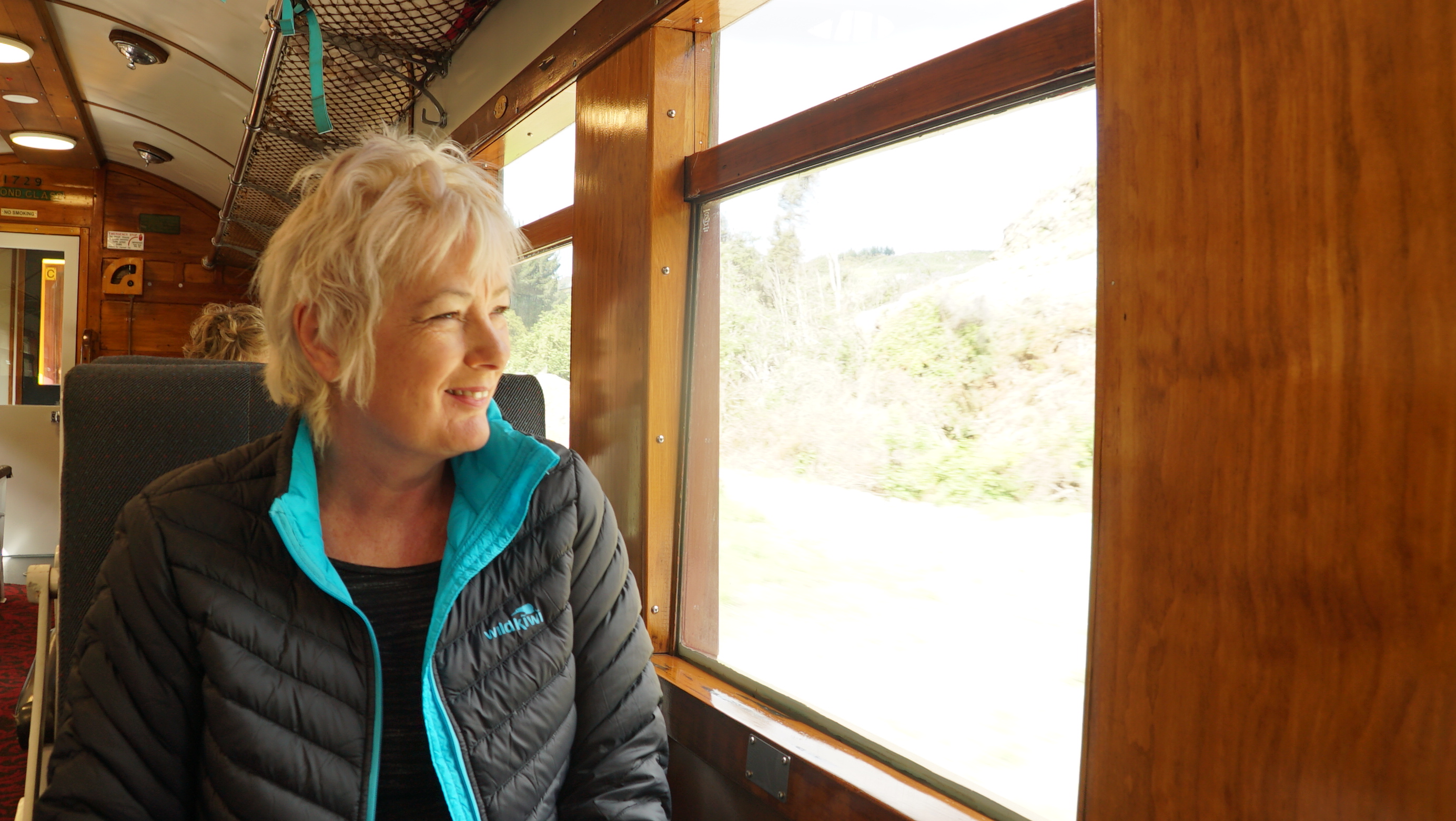
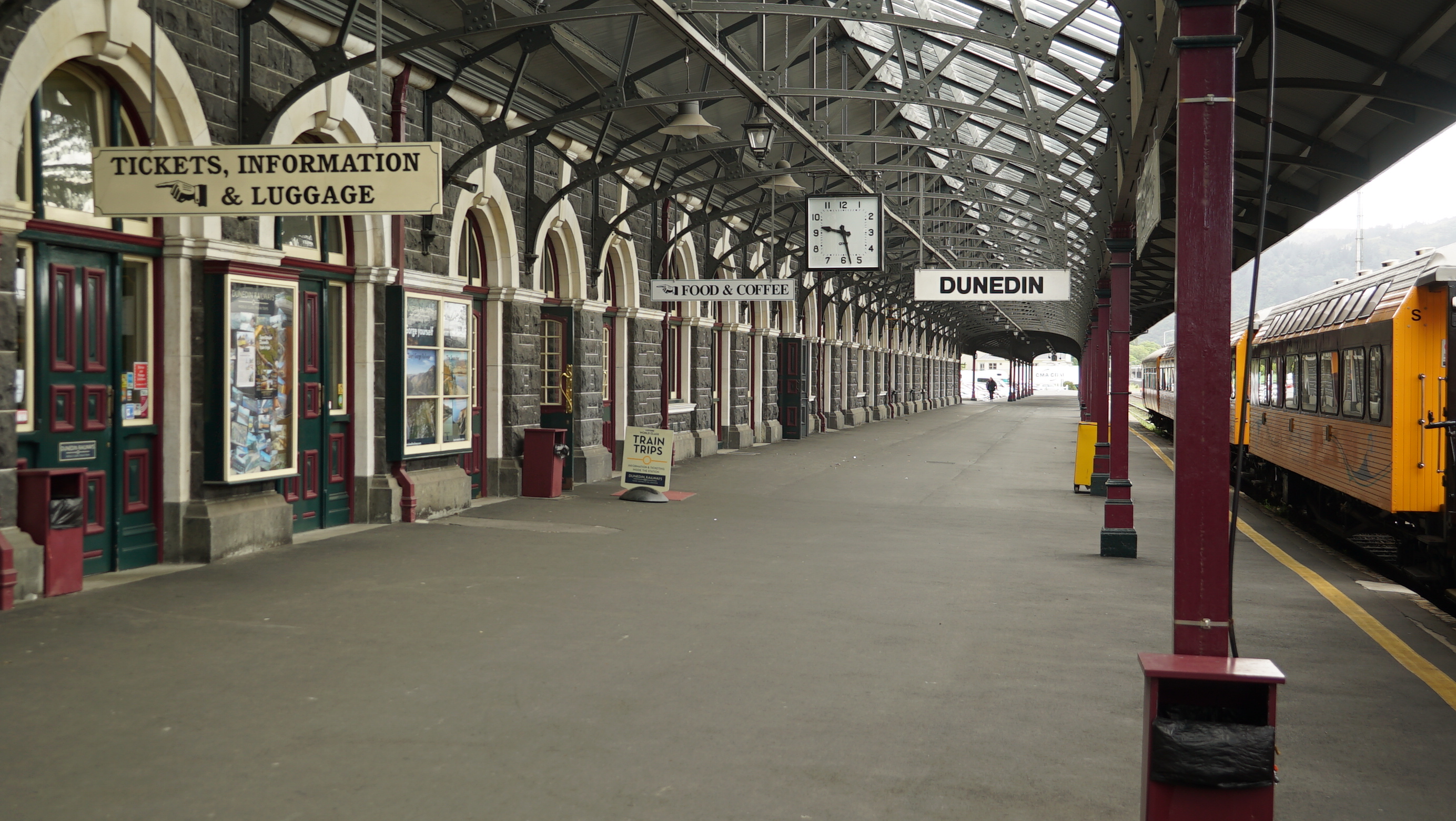
The trip is made more the interesting by the ability to hang out between the carriages taking pictures.

And by the laconic wit of the guard who gives a running commentary over the tannoy all the way there. The train isn’t that full and you sort get to know the other faces on the train and they do a mean pie in the buffet car.
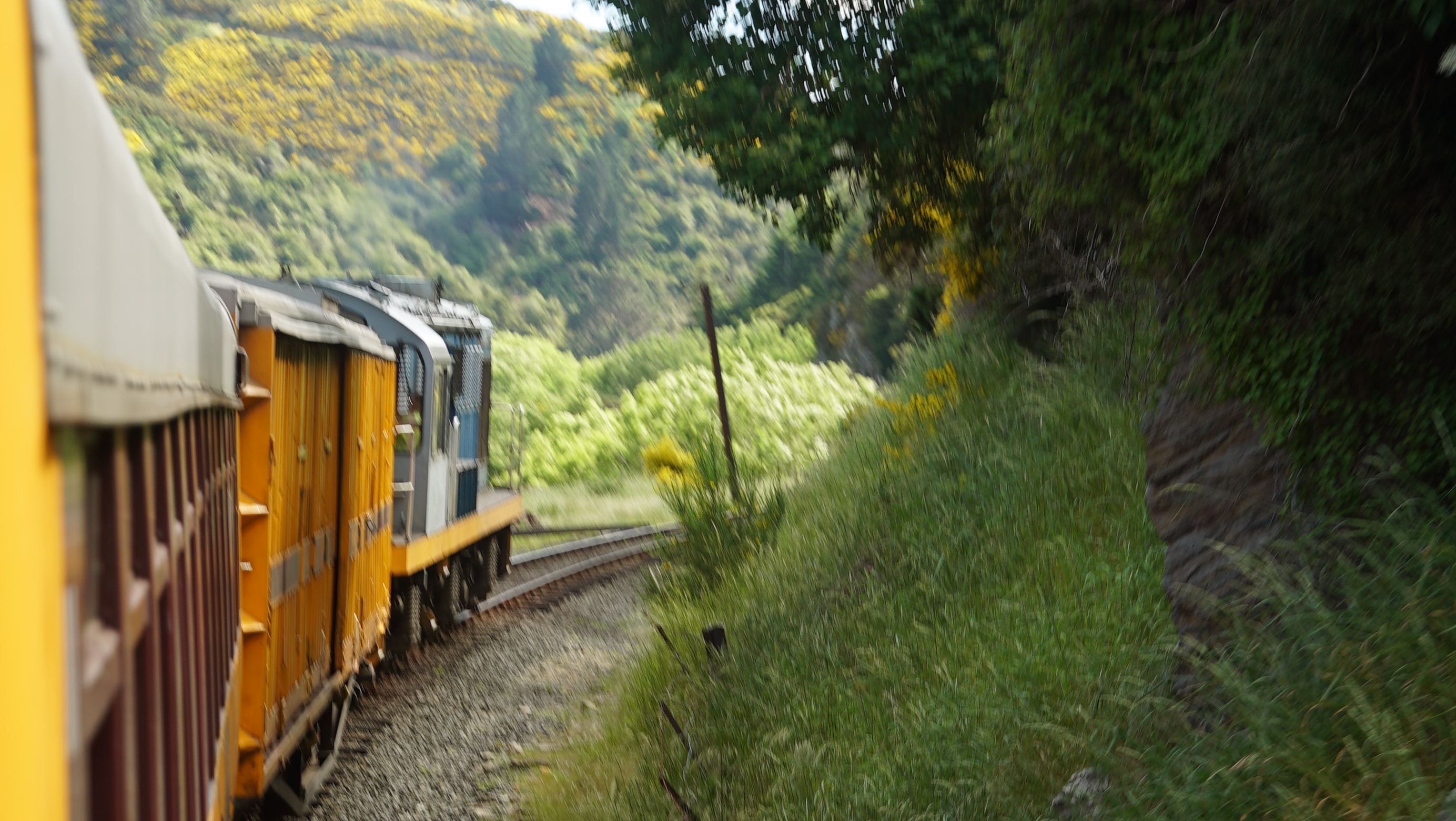
Incidentally this where the guard hangs out with his microphone set up on a table next to the diners.
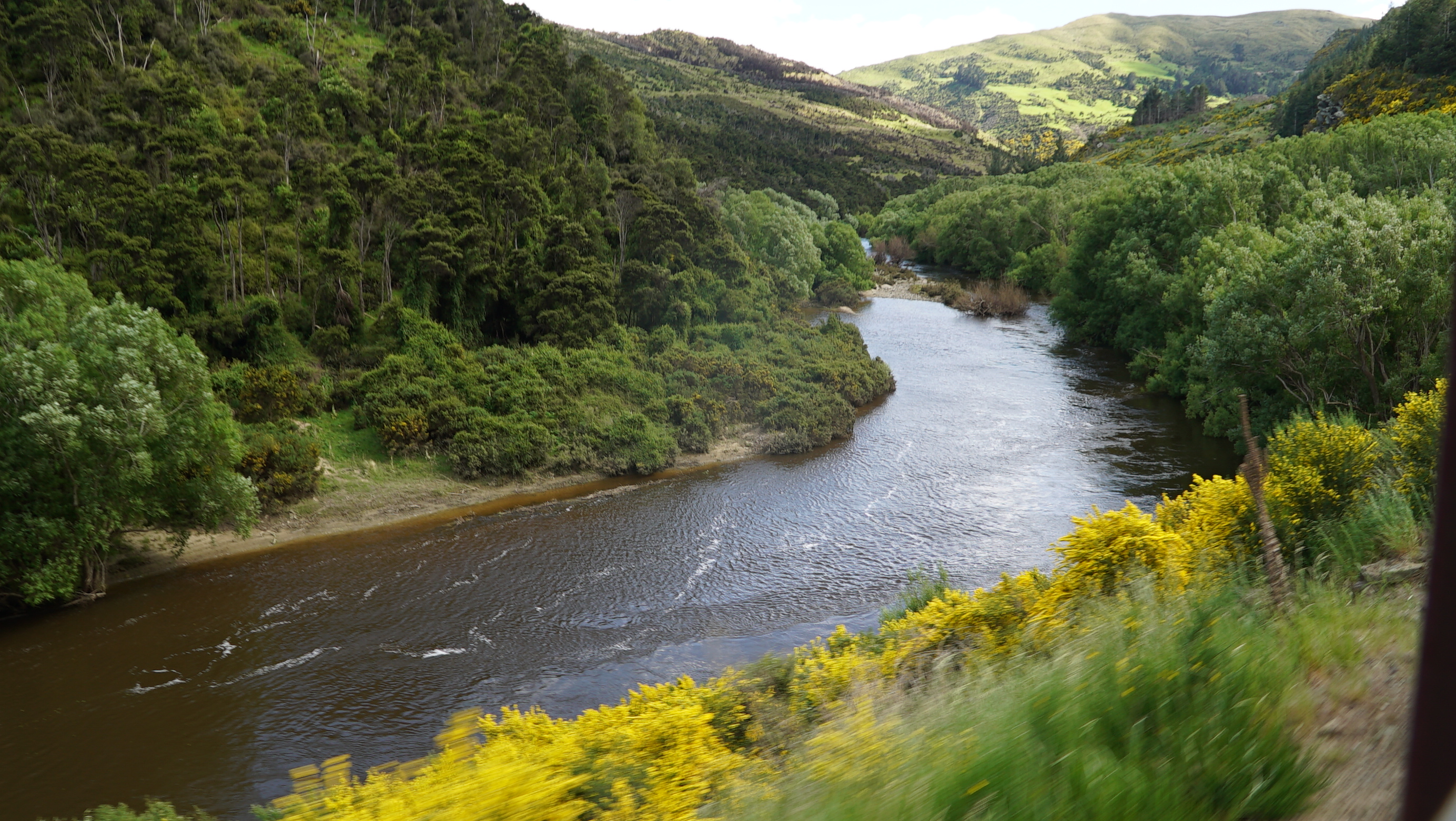
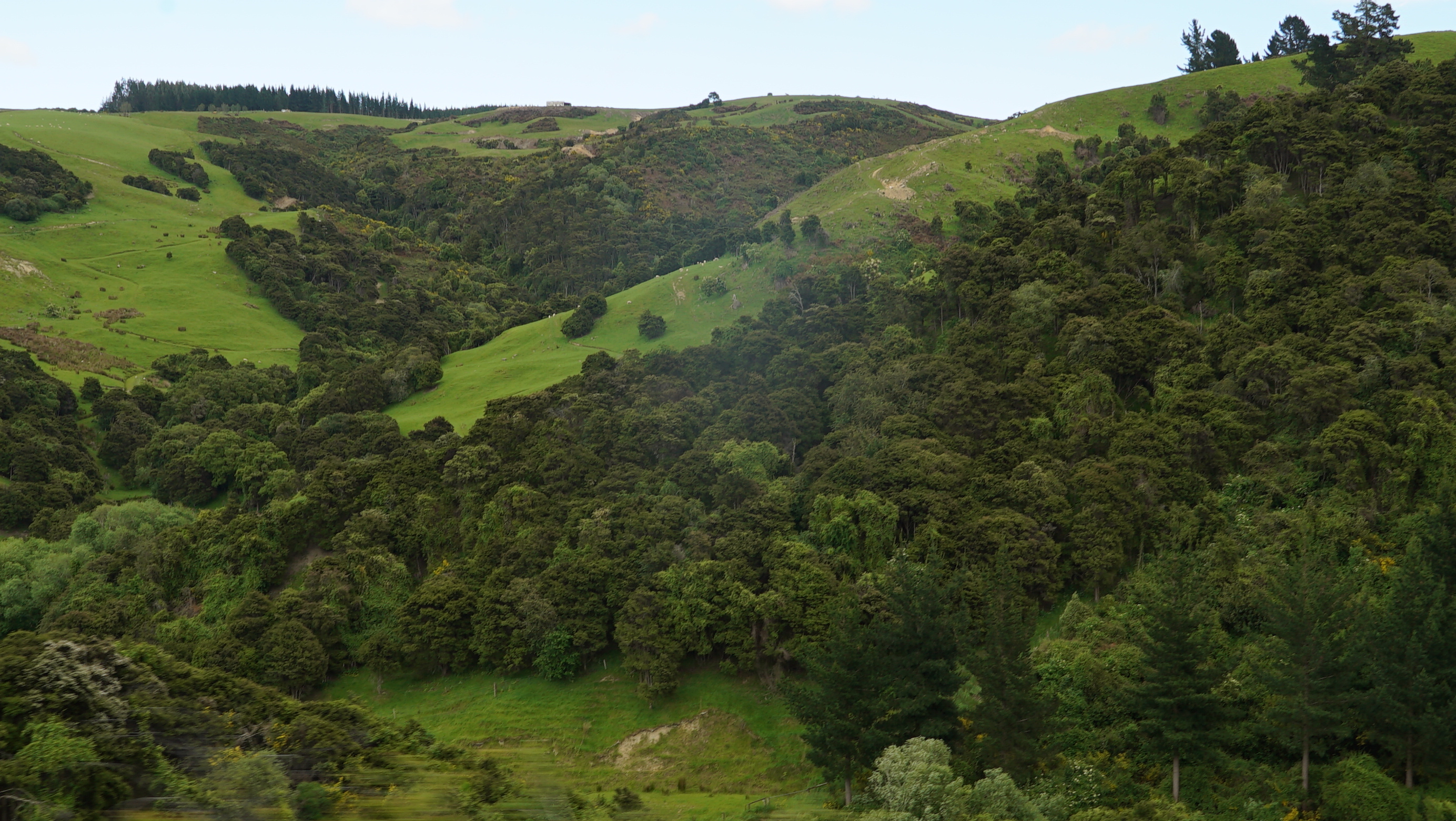
The train winds it’s way slowly up the gorge.
This is the largest wrought iron structure in the Southern Hemisphere.
Apparently the Eiffel Tour is the largest.
Who am I to argue.
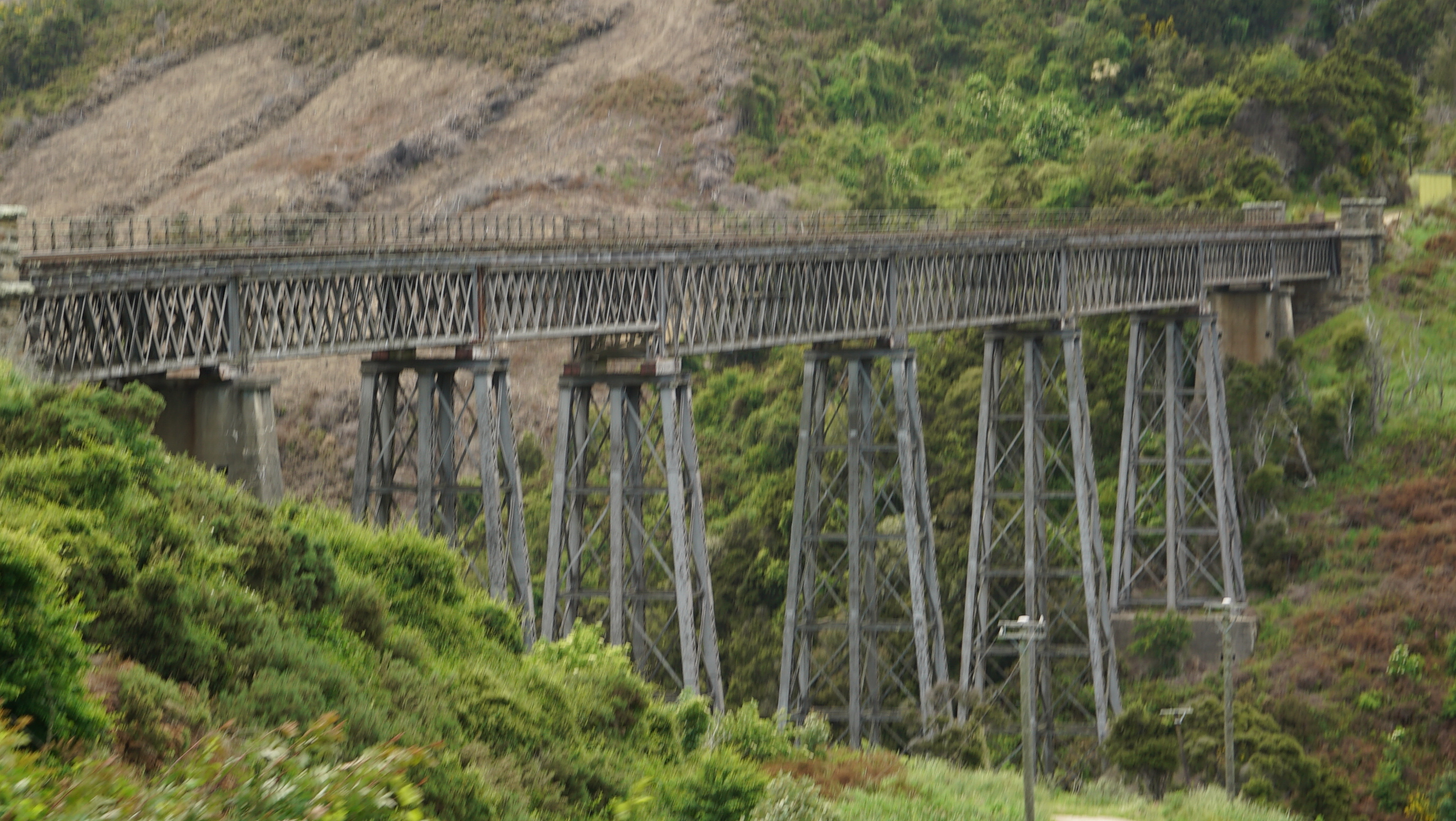
Once we reach the top we stop at Pukerangi.
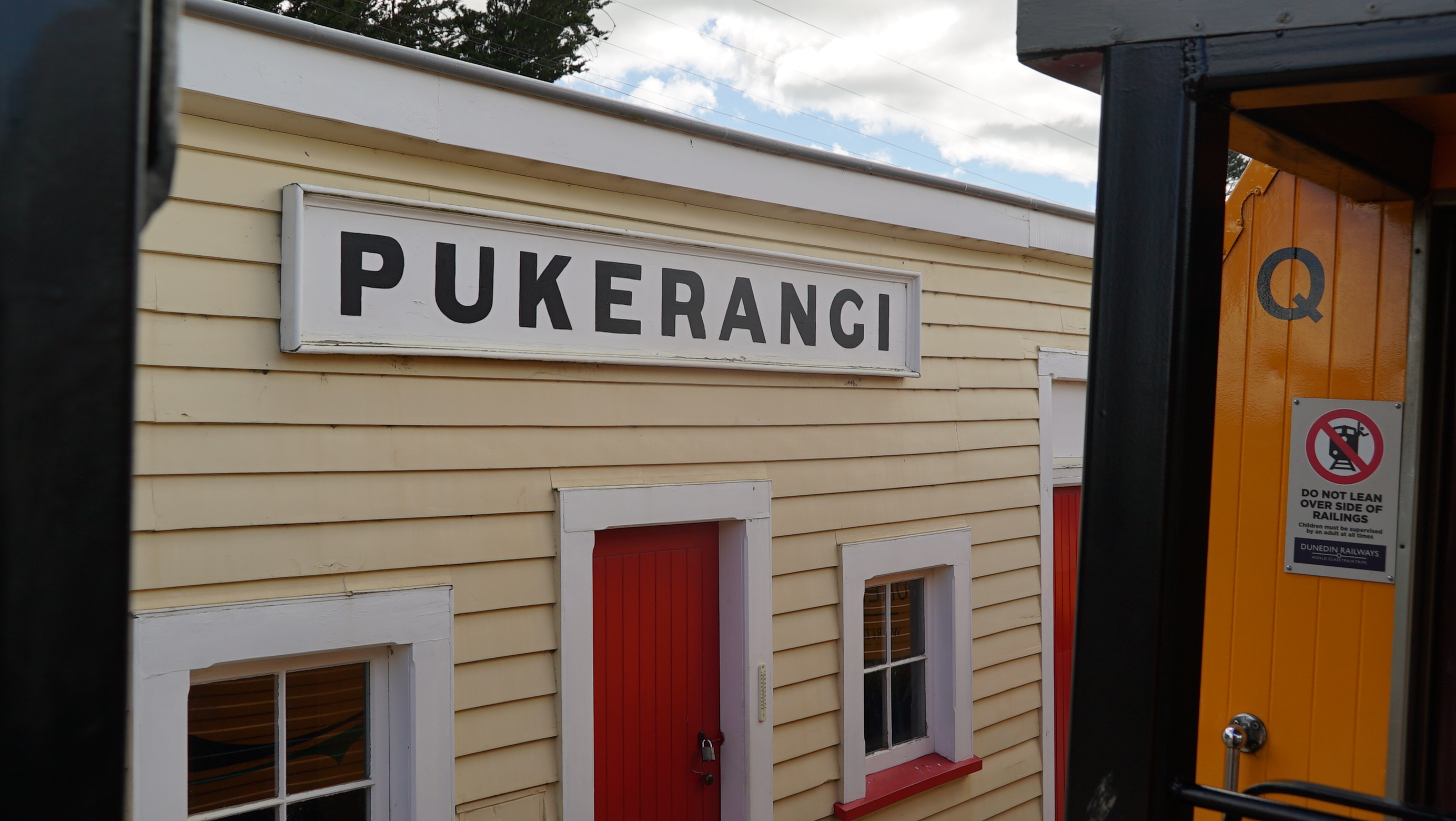
This seems to be a stop for the train without significance. The train used to go further but the Hydro Plant at the Clyde Dam flooded the line further up.
So now they just decouple the engine here, move it to the back of the train and pull us back down the gorge.
There is a lass with sheep up at the top selling wool products. She should charge for pictures especially when there are Chinese onboard. They never take one photo when ten would do.
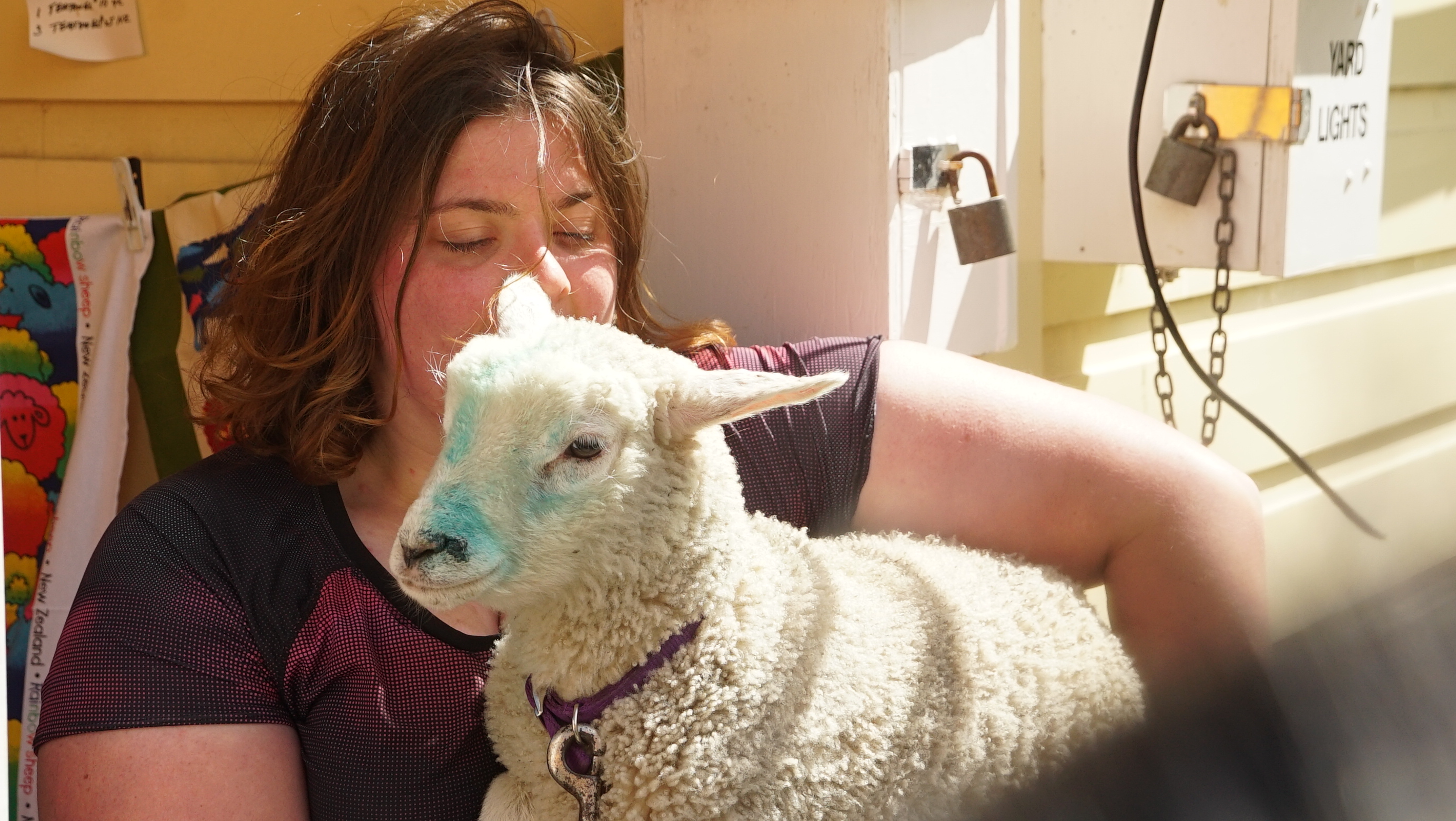

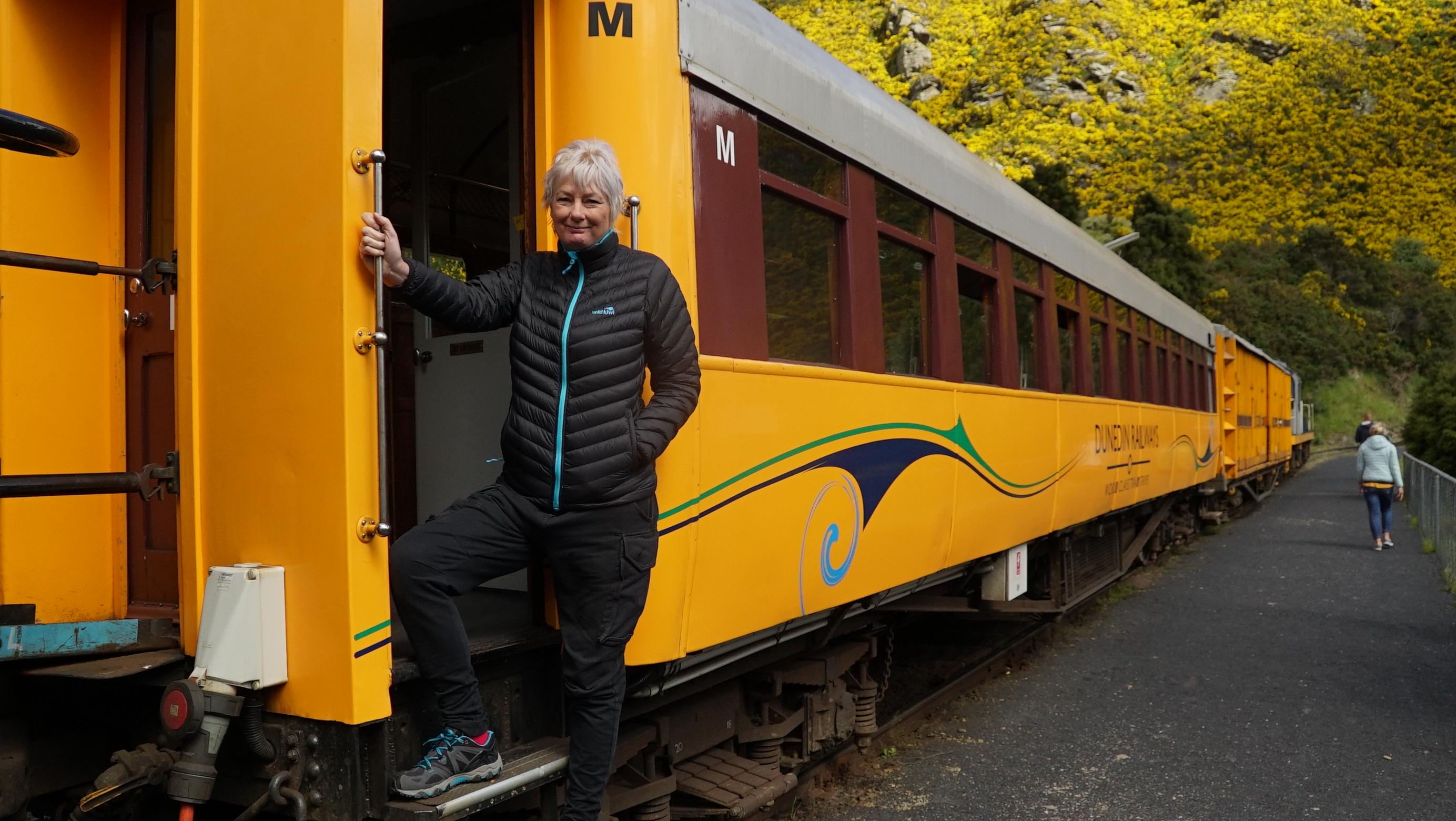
All aboard again.
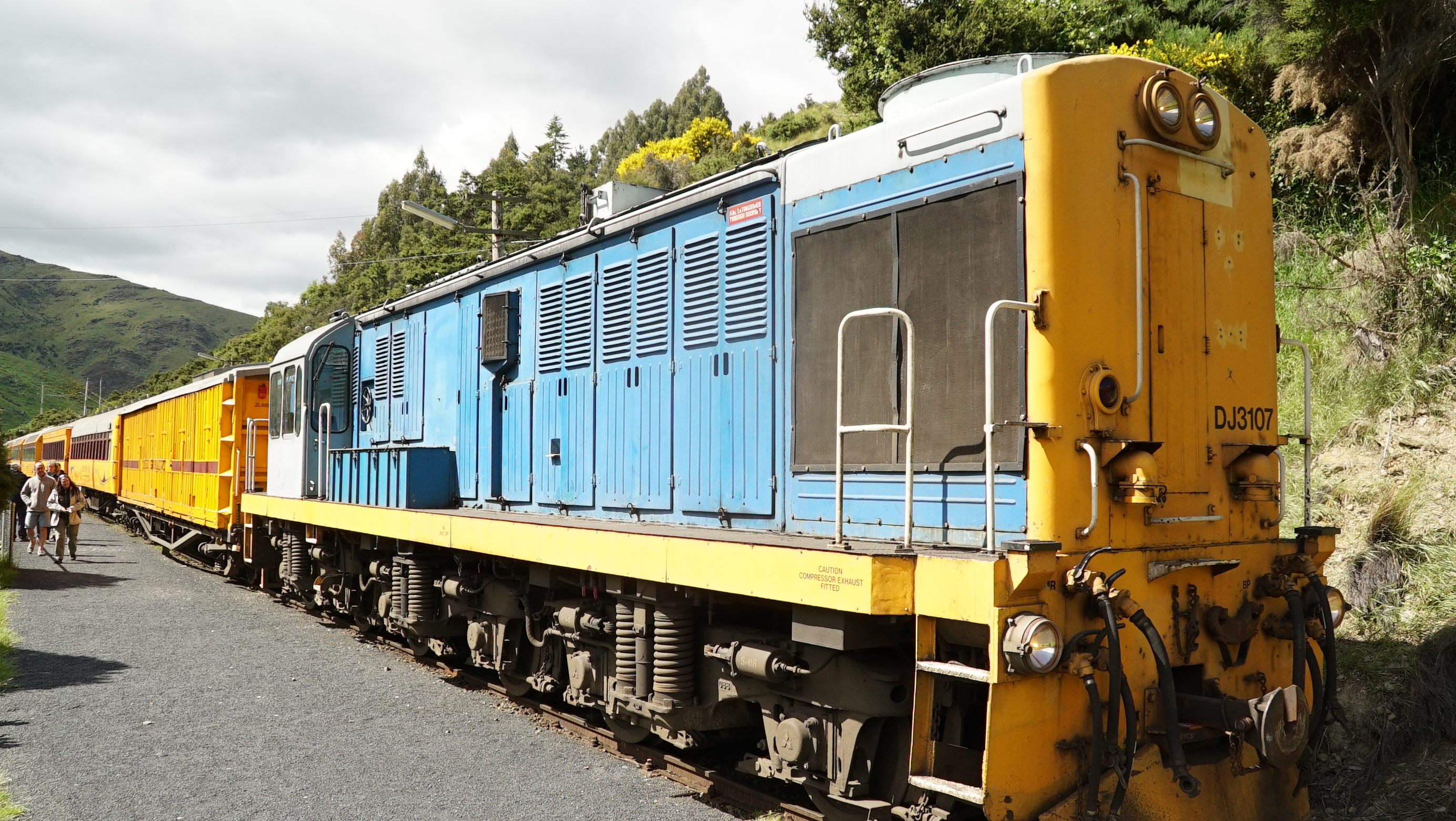
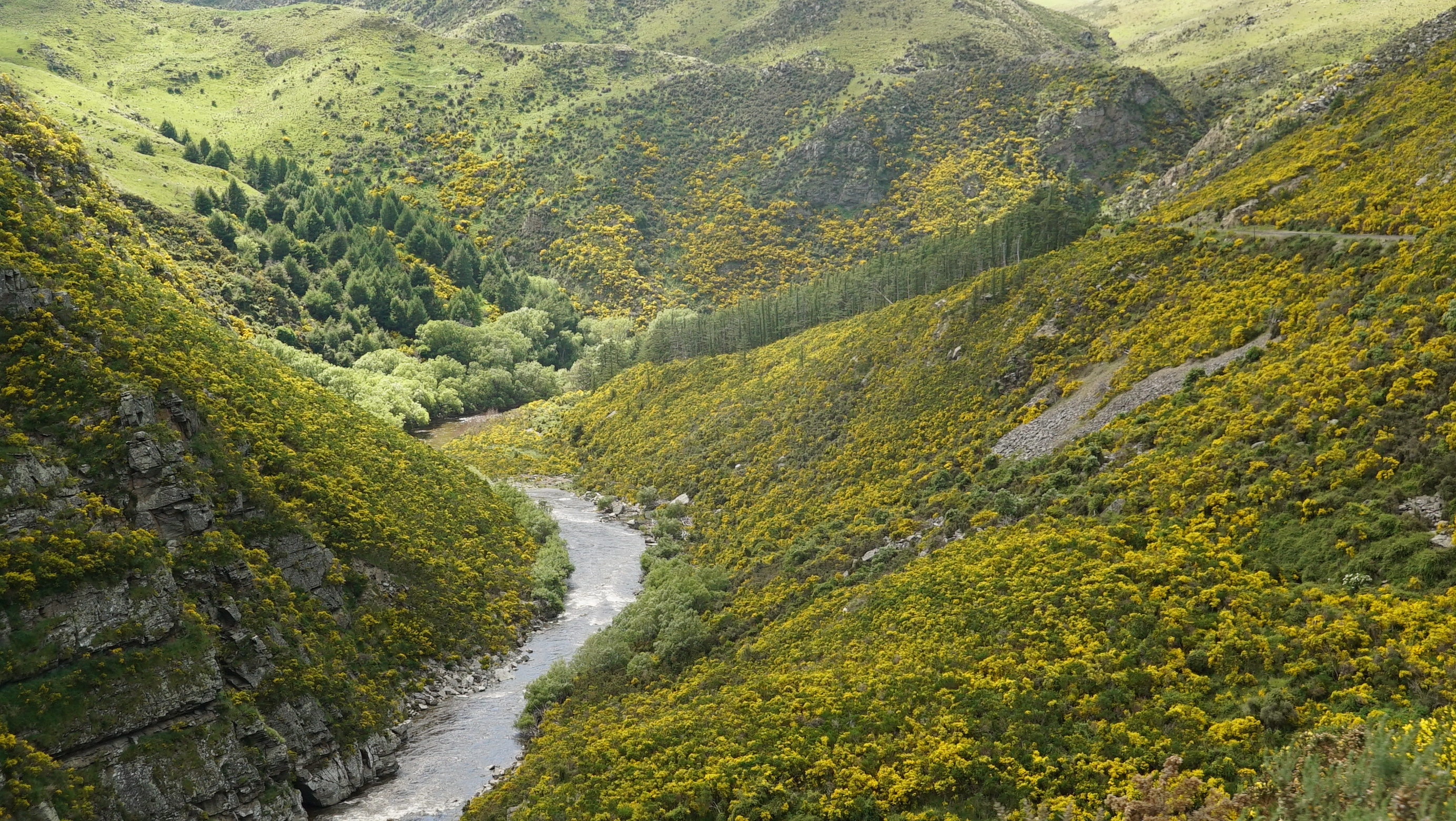
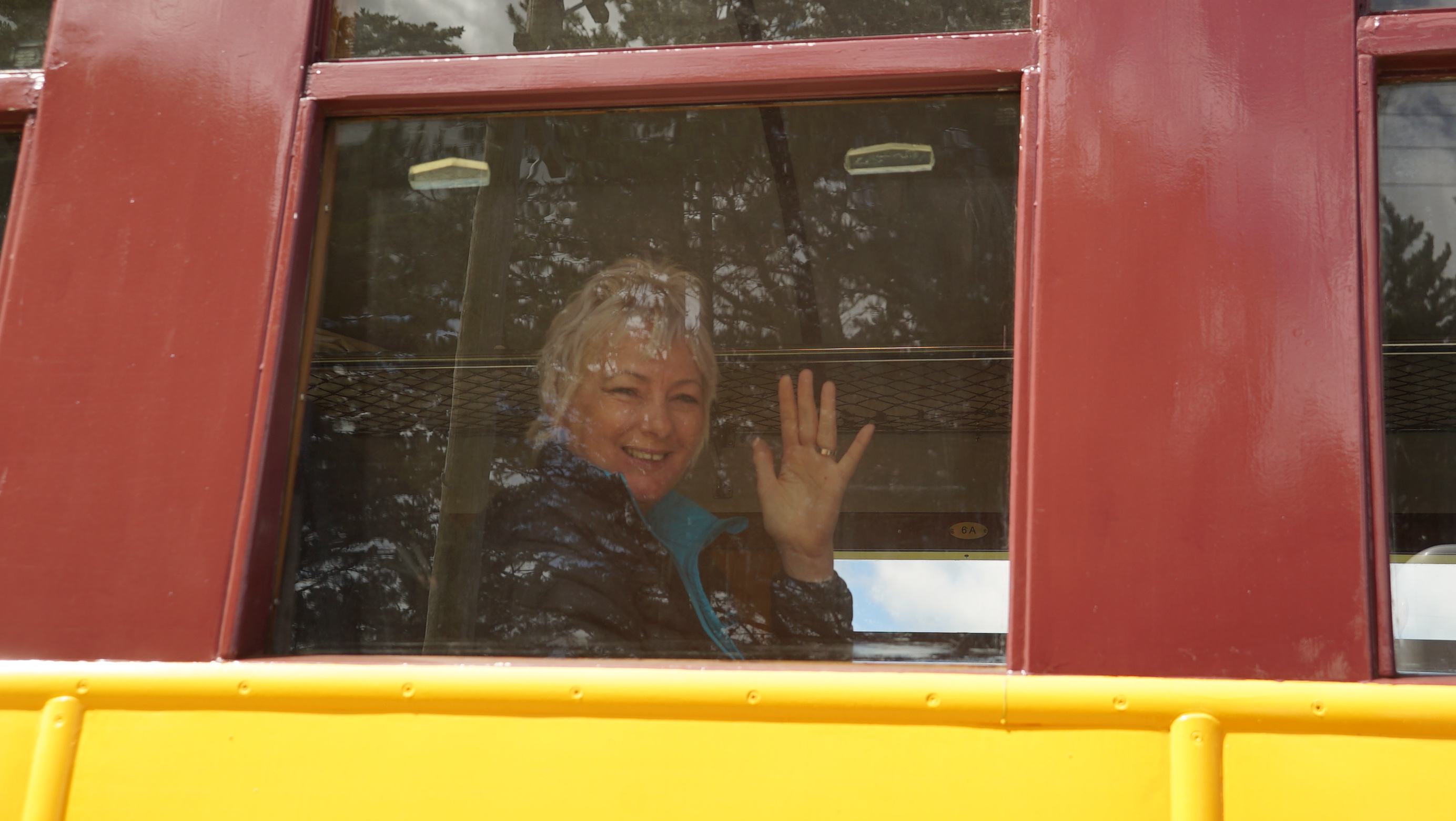
Altogether a most enjoyable trip and I would recommend it.
Next we visit the Chinese garden that is next door. This is a formal chines garden which is in honor of all the Chinese past and present in New Zealand.
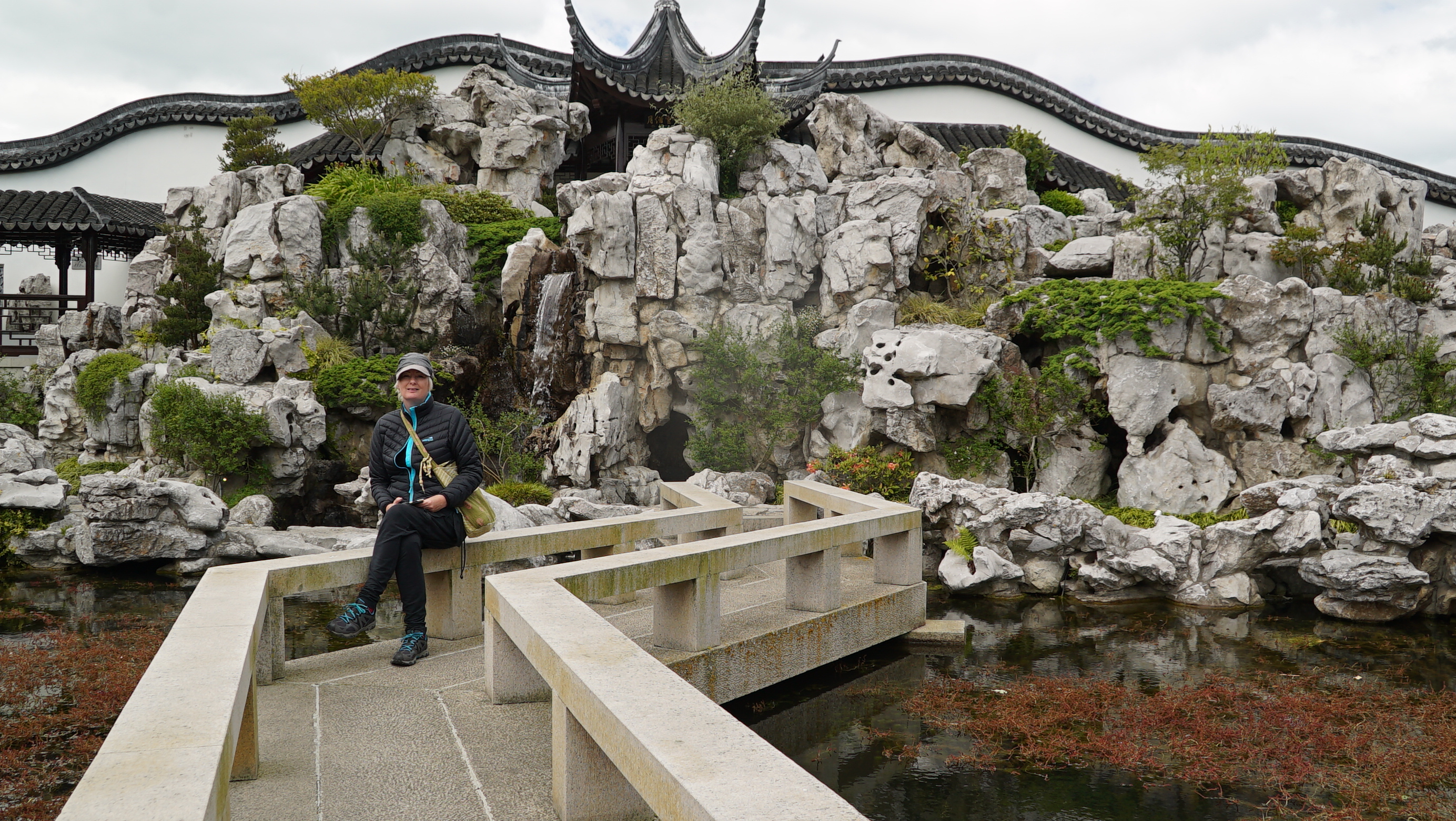
They first came for the gold rush and used to stay until they had made the equivalent of £100.00 then headed back home There weren’t any Chinese women. After that gradually a resentment built up until they were actively discriminated against. Only one Chinese imigrant with every 10 tons of imports. This became one per every 100 tons and then one per every 200 tons. So it went so there lot was not particular pleasant until after the war the situation changed. The fact that they were not supporting Japan during the war helped dissipate the resentment and place the seeds of enlightenment that have led to their place in New Zealand society today.
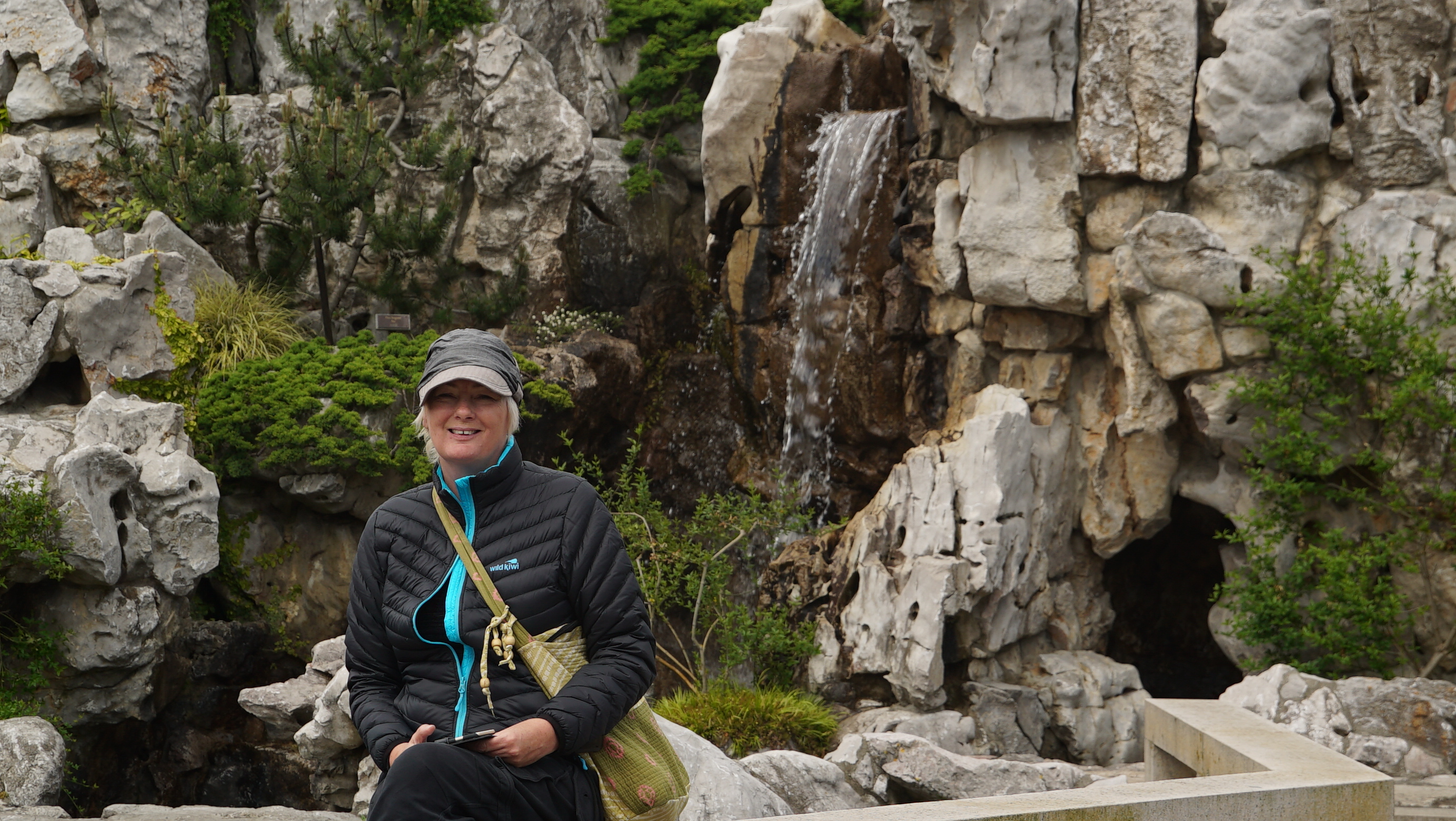
After that we head north. This is a pleasant journey save for the huge gusts of wind that nearly take us off the road at some points. The wind blows of the hills. The road south is mostly farmland with a predominance of sheep and some cattle. Here their herds seem in the hundreds any time you see them.
The final part of the journey is through the Catlins Forest and this is another climb through forest and has as ever it’s own particular splendor. Pity the rain makes it more of a chore than a pleasure.
Not sure what the ducks are.
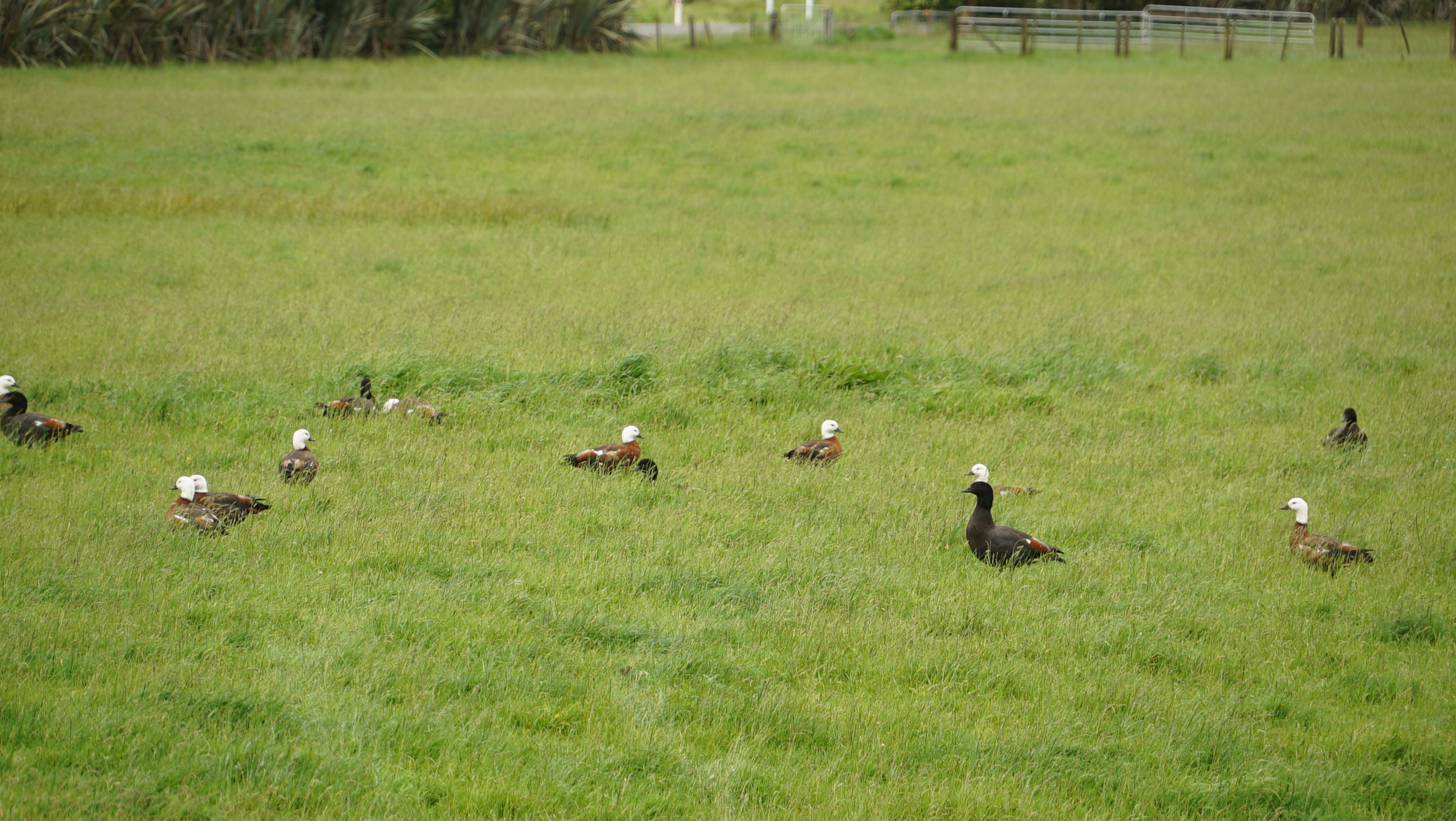
We emerge and travel on to the campsite.
